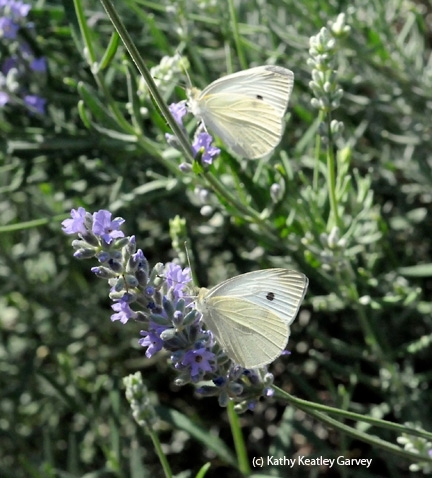
Art Shapiro hasn't found it yet, and neither has anyone else.
So you can keep looking.
If you collect it, and it's verified as the first one of the year, you'll win a pitcher of beer or its equivalent. Suds for a bug.
Shapiro, UC Davis distinguished professor of evolution and ecology, launched the contest, "A Beer for a Butterfly" in 1972 to determine the first flight of Pieris rapae. It's all part of his ongoing scientific research. Since 1972, the first flight has varied from Jan. 1 to Feb. 22, averaging about Jan. 20.
Shapiro, who has monitored butterfly populations in Central California for more than four decades and maintains a website where he posts his research, usually wins his own contest because he knows where to look. He's been defeated only four times, and all by UC Davis graduate students.
The 2018 winner? Shapiro collected that one on Friday, Jan. 19 in a mustard patch near railroad tracks in West Sacramento, Yolo County, one of his frequented sites.
But he doesn't expect to find the winner there this year.
"The numbers were very low in West Sacramento last fall and there was no germination, so the only host plants available were Lepidium latifolium and a very few Hirschfeldia," he says. "I'm expecting a VERY poor spring brood there and elsewhere."
The contest rules include:
- It must be an adult (no caterpillars or pupae) and be captured outdoors.
- It must be delivered alive to the department office, 2320 Storer Hall, UC Davis, during work hours, 8 a.m. to 5 p.m., Monday through Friday, with the full data (exact time, date and location of the capture) and your name, address, phone number and/or e-mail.
The receptionist will certify that it is alive and refrigerate it. (If you collect it on a weekend or holiday, keep it in a refrigerator; do not freeze. A few days in the fridge will not harm it, Shapiro says.) - Shapiro is the sole judge.
The butterfly inhabits vacant lots, fields and gardens where its host plants, weedy mustards, grow. The male is white. The female is often slightly buffy; the "underside of the hindwing and apex of the forewing may be distinctly yellow and normally have a gray cast,” Shapiro said. “The black dots and apical spot on the upperside tend to be faint or even to disappear really early in the season.”
Any predictions for when we can say "We have a winner!"
"No hope before mid-month," Shapiro says. "I'm forecasting Jan. 27."
Attached Images:
